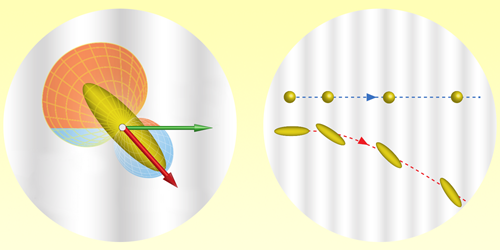Newly Discovered Acoustic Forces
The use of sound waves to levitate particles and droplets has been studied experimentally and theoretically for at least a century. Now Mihail Petrov of ITMO University in Russia and his collaborators have added a new strand to that long history. The theorists have identified a new force—dubbed lateral recoil—which nonspherical particles experience in an acoustic plane-wave field [1]. The researchers found that this force could, in principle, be used to separate red blood cells, which are biconcave disks, from white blood cells, which are nearly spherical.
Petrov and his collaborators’ starting point was a 1961 theory that specifies the force on a small spherical particle subject to incoming acoustic waves. To generalize the theory to nonspherical particles—specifically, ellipsoids—they introduced higher-order terms and calculated the acoustic linear and angular momentum in the incident and scattered waves. Their analysis revealed the existence of the lateral recoil force, which acts when a particle is tilted at a particular angle relative to the acoustic waves, and also a torque, which rotates the particle. Under certain conditions, the torque is zero and an ellipsoidal particle stops rotating and stably lifts—that is, drifts laterally—in the acoustic field.
The researchers went on to use their theory to explore whether sound waves impinging on a gently flowing mixture of red and white blood cells could separate the two types of cells. The results showed that, at a frequency of around 230 MHz, the stable acoustic lift is strong enough to reliably divert the red blood cells to the sides, while the white blood cells continue undiverted.
–Charles Day
Charles Day is a Senior Editor for Physics Magazine.
References
- M. Smagin et al., “Acoustic lateral recoil force and stable lift of anisotropic particles,” Phys. Rev. Appl. 22, 064041 (2024).





